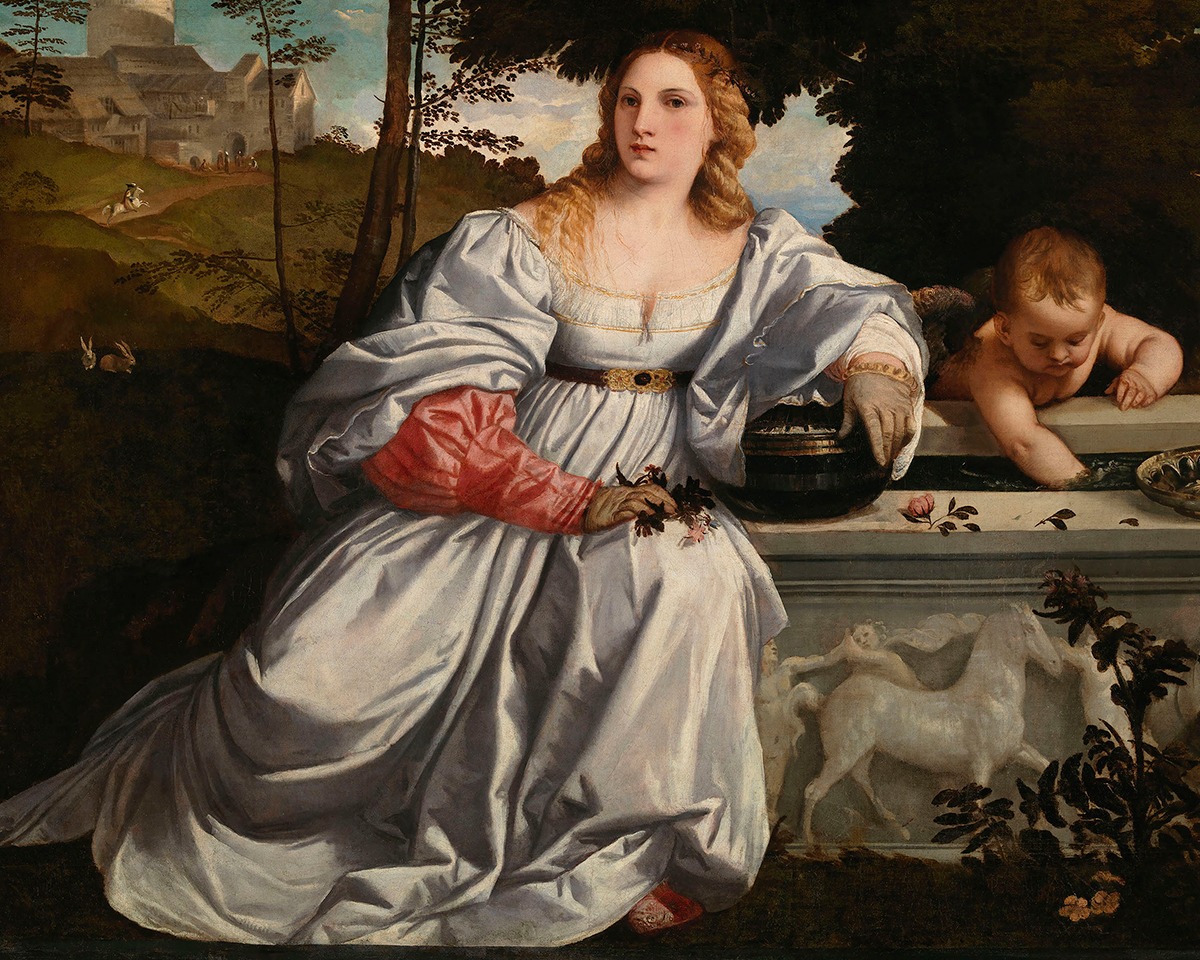GALLERIA BORGHESE TELLS A MASTERPIECE: SACRED LOVE AND PROFANE LOVE OF TITIAN

A work of rare compositional and chromatic balance, rich in symbolism, this is one of the most famous paintings of Titian and of all Italian art. It is an authentic icon of the complexity of Venetian Renaissance culture in the early 16th century and the elegance of Titian’s art in the period when he was between 25 and 30 years old.
It revolves around the contrasting roles of the two look-alike female figures: the so-called Profane Love or, Earthly Venus – opulently clothed and seated on a sarcophagus – and the so- called Sacred Love, or Heavenly Venus, nude and slightly leaning on the edge, with a small brazier in her hand. Between them, a Cupid is stirring the water in the sarcophagus with his hand. Over the centuries, the painting has been interpreted in many different ways, especially with regard to the two women. The latter one is undoubtedly a Venus, but – in addition to other possible interpretations – the attributes of a bride are recognizable in the former.
In effect, the painting was executed for the marriage of Niccolò Aurelio, secretary of the Venice Council of Ten, and Laura Bagarotto, a gentlewoman from Padua, as shown by the couple’s coats-of-arms on the sarcophagus and the silver bowl, respectively. The two were married on 17 May 1514 in Venice, but under unfavourable auspices. In effect, a few years earlier the Venice Council of Ten had sentenced to death Laura’s father, a jurisconsult from Padua accused of high treason. When Niccolò Aurelio asked for her hand, Laura obviously did not want to marry one of her father’s judges. But Venice gave her back the dowry it had confiscated, Aurelio endeavoured to have her father rehabilitated, and they were wedded. The painting was commissioned to celebrate the marriage, perhaps as a gift to the bride, and in this sense is a work of persuasion to Love, which shows how love elevates the soul, in accordance with the Neoplatonic philosophical doctrines that were widespread in Venice at the time.
In the centre of the composition is a sarcophagus, a symbol of death, which could allude to Laura’s father. But it is full of water; it is a spring, and water is the most obvious symbol of life. In the middle, the little Eros is stirring the water, mediating, transforming death into a promise of life, as only Love is able to do.
There is a series of indications that the seated, elegantly dressed woman is a bride of high rank: her gloves, a sign of social distinction; the roses and the little crown of myrtle on her head, which are sacred to Venus and allude to marriage; the repoussé silver sewing box, the gift that the best man would give the bride.
The bride is cold and composed, in both her expression and Titian’s choice of colours. Nude, but with an incense-burner – a sign of high social standing – in her hand, the other woman is turning towards her, as if to call her and show her the way – a way that philosophically must lead to spiritual love, to sublimation. But the second woman is also portrayed in warmer colours, softer, more sensual. Because this too is part of the persuasion employed to transform the frigid, socially impeccable bride into an enamoured wife.
The auspices of the painting were to come true, because we can infer from Niccolò Aurelio’s will that their marriage was a successful one.
The work entered the Borghese catalogue through Scipione Borghese’s acquisition of Cardinal Sfondrato’s substantial collection of paintings in 1608.